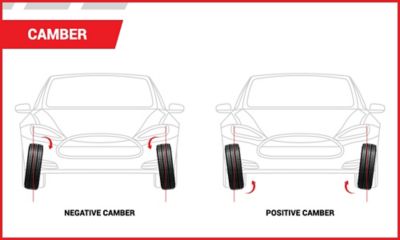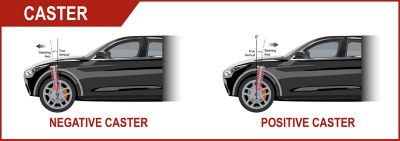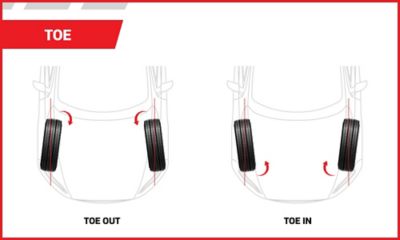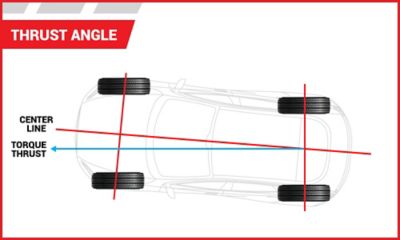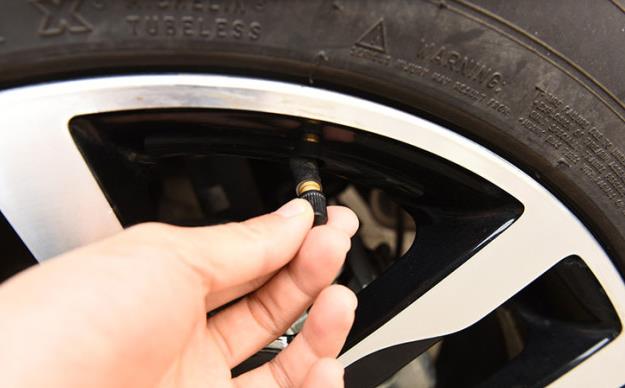Wheel Alignment: What It Really Means
Some call it wheel alignment. Others call it tire alignment or car alignment, and sometimes people refer to it simply as alignment.
Whatever you call it, it's a vital part of routine vehicle maintenance, and the payoff is longer tire life, better fuel economy, better performance, and safety.
Alignment: It's All About Angles
When the vehicle's suspension and all of the steering components are lined up and straight, the wheels are aligned.
This is actually a complex process in which suspension angles are measured and a variety of suspension components are adjusted.
In other words, your wheels will be properly aligned with both each other and the vehicle's axles, helping ensure that the tires are angled to make optimum contact with the road surface — providing better drivability, control and safety. Plus, proper alignment results in more even wear, so your tires will have a longer life.
What causes out-of-alignment wheels
Often, normal wear and tear causes components of a suspension system to wear down and stop operating at desired angles. Symptoms of an out-of-alignment vehicle will be more immediately felt if you hit a pothole or curb or you ride with enough of an extra load in the vehicle to change the ride height.
There isn't always a symptom to alert you that your wheels are out of alignment, but typical signs may include uneven tire wear, the vehicle pulling to one side, and the steering wheel being off center when driving in a straight line. When these things happen, it means that the steering and suspension settings are not correct, and your wheels are not aligned. However, you do not necessarily have to see one of these signs for your wheels to be out of alignment.
The Primary Angles of an Alignment
There are several different types of alignment — front end, thrust angle and four wheel. Make sure that you consult a certified technician or your owner's manual to ascertain the recommended alignment services for your vehicle.
No matter the type of alignment your vehicle requires, the primary suspension angles that need to be measured and adjusted are caster, camber, toe and thrust.
Camber, caster, toe and thrust
Camber is the angle of the front tires when viewed from the front of the car. When the angle of the tire slants away from vertical in either direction, it can be a sign of misalignment. If the camber angles are off, the edge of the tires will experience abnormal wear. When camber is within specifications, your tires will be at their best angle to make level contact with the road.
Caster angle settings optimize steering effort, high-speed stability and cornering performance. Positive caster is when the top of the steering axis tilts toward the rear of the car. Positive caster is beneficial because it aids steering return and helps the wheels self-center and run straight, but it also slightly increases steering effort. The higher the caster angle, the greater the steering effort. Negative caster is when the top of the steering axis tilts toward the front of the car. It creates an unstable condition that affects steering and results in decreased control.
Toe angle identifies the exact direction the tires are pointing in relation to the centerline of the vehicle. Toe has the greatest effect on tire wear of any alignment angle. "Toe in" is when the tires point in toward the centerline, much like your toes pointing inward. "Toe out" is, you guessed it, when they point away from the centerline. "Zero toe" is when they are completely straight and pointing forward. An incorrect toe setting can lead to uneven wear and decrease the life of your tires.
The thrust angle measures axle alignment by comparing the angle of the rear axle with the centerline of your vehicle. Looking at a car from above, you would draw the thrust line perpendicular to the rear axle. This identifies the direction in which the rear wheels want to roll. If you compare the thrust line with the centerline of the vehicle and they match, the vehicle will drive straight. If the thrust line and the centerline don't correspond, the vehicle won't drive straight. Evaluating the thrust angle also determines if the rear axle is parallel to its front axle and if the wheelbase measurements match.
It's not hard to imagine the effect on steering and directional stability when the rear wheels do not follow the front wheels, especially if you're driving in less than optimal weather conditions. A misaligned thrust angle may also cause diagonal wear on the rear tires and increase the chance the vehicle pulls or drifts to one direction.
To eliminate the thrust angle, realigning the rear axle or rear toe is necessary. If bent or damaged parts are responsible, these must be replaced.
All vehicle manufacturers provide recommended settings for camber, caster, toe and thrust angles for proper alignment. An alignment specialist can identify and help ensure that your vehicle meets these guidelines. Once aligned, all of the symptoms of misalignment should disappear.
Wheel Alignment: Worth Every Penny
Getting an alignment can be a source of sticker shock, but there's one more angle to consider. The money you will save in the long run might far outweigh the cost of wheel alignment. When your wheels aren't aligned, your tires aren't making optimum contact with the road. The result is more resistance and friction, which require your engine to work harder to get going and stay moving. If your engine has to put in more effort, then it'll need more fuel, which means more money out of your pocket. And don't forget, proper alignment helps extend the life of your tires, which of course means fewer tires for you to buy.



